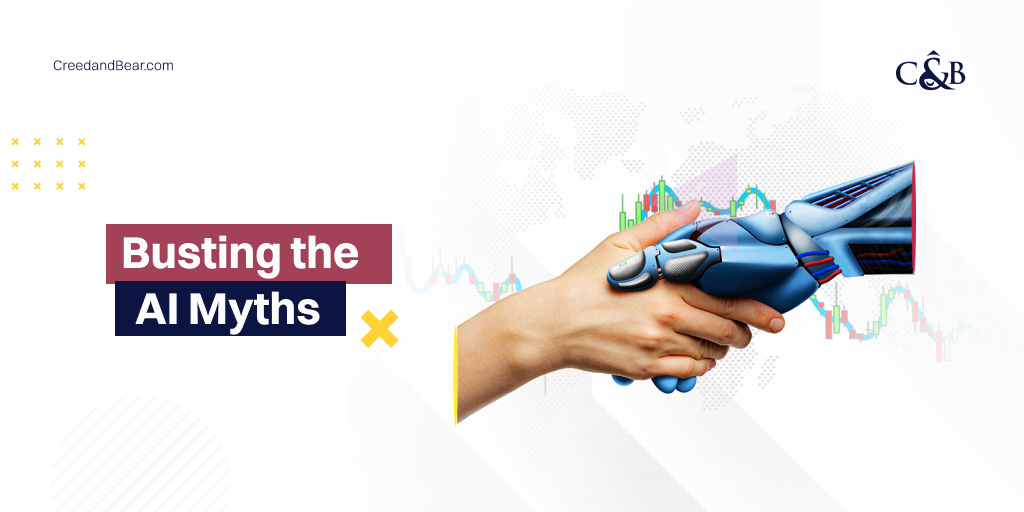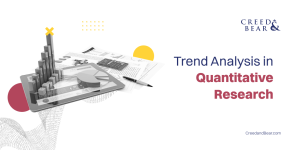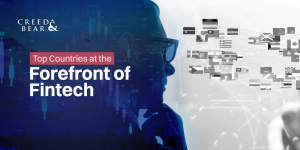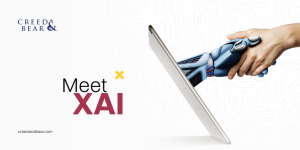In an era dominated by technological advancement, artificial intelligence and its sudden rapid adoption has become an increasingly polarizing subject. On the one hand, the emergence of AI-powered tools such as Open AI’s ChatGPT and Google’s Bard promises improved productivity and efficiency in a wide range of professional practices — from creative production to task automation. On the other hand, some intellectual and influential figures are expressing concerns about artificial intelligence, particularly regarding the control protocols necessary for AI to develop and evolve safely. In this blog, we look to unravel the most common AI misconceptions and shed light on the vital aspects that underpin this powerful technology.
Myth 1: AI has developed human-like intelligence
One of the most enduring misunderstandings about AI is that it possesses cognitive abilities of the same level and complexity as a human. While AI systems have incredible processing speed, there is no definitive proof that these technologies already have true consciousness or understanding. AI systems only develop and learn patterns by processing high volumes of training data. While AI technologies are exceptional in performing tasks like language processing or image recognition, such systems have yet to replicate true human consciousness and comprehension.
Myth 2: AI systems do not make mistakes
Another common misconception about AI is that these technologies are error-free. Artificial intelligence systems rely heavily on high-quality data structured and organized to train the algorithms for pattern recognition. Depending on the neutrality of the training data and the method of input into the system, AI algorithms can be susceptible to biased or inaccurate answers. Understanding the importance of data quality and continuous monitoring is vital to ensuring the precision and quality of AI outputs.
Myth 3: AI will completely replace the human workforce
There has been a lingering concern that AI development and adoption across business sectors will result in job destruction — that artificial intelligence will replace human workers in the future. However, the more likely scenario is that humans will become more efficient, accurate, and productive at their jobs with the help of AI. Tools and software can leverage AI technology to automate routine and repetitive tasks, allowing humans to focus on creative, intellectually intensive, and sophisticated pursuits. It is all a matter of human workers integrating new skills that capitalize on the strengths of AI to enhance their performance.
Myth 4: AI can replace human creativity
The emergence of tools and software such as Midjourney, Dall-E 2, and Stable Diffusion has sparked conversations about artificial intelligence-derived art replacing human creativity. This is rooted in the fact that AI art can be made in mere seconds with a simple text prompt. However, while AI technologies can produce incredible creative works by using large training data, it has yet to display the capability of humans to create awe-inspiring creations drawing from human experiences, cultural influences, and raw emotions. AI systems simply lack the depth of inspiration and insight to create work that is truly unique and resonant.
Myth 5: AI is for programmers and tech experts
The notion that AI is solely for tech experts is misguided. Tools and applications integrating AI are already finding use cases across diverse practices and disciplines. Software developer Adobe has integrated artificial intelligence into their Photoshop product for faster image manipulation through simple text prompts. Simplified integrations such as these show that deep technical knowledge is unnecessary to leverage AI technologies.
Conclusion: Separate AI fact from fiction
As AI continues to evolve and shape our world, it’s crucial to distinguish between fact and fiction. AI is a powerful tool, but it remains a creation of human ingenuity. Understanding its capabilities and limitations will enable us to harness its potential responsibly, driving innovation and progress while dispelling the myths that cloud our perception of this transformative technology.
AI Usage: This article was initially drafted with the assistance of artificial intelligence and subsequently edited to ensure originality and avoid plagiarism. However, in the event that the content inadvertently resembles other works, we do not assume responsibility for any unintentional overlaps or similarities. We invite readers to notify us of any such resemblances so that we can make the necessary modifications in respect and consideration of other authors and brands.
Finance and Trading: The insights and opinions expressed in this blog post concerning trading and market are solely those of the author and should not be interpreted as financial advice. This content is for informational purposes only and does not constitute recommendations or endorsements for any specific investments, securities, or financial strategies. Readers should conduct their own research or consult with a financial professional before making any investment decisions.





